Clancy Tucker's Blog, page 8
August 11, 2022
4 November 2022 - UNDERGROUND MOSQUE IN ISTANBUL
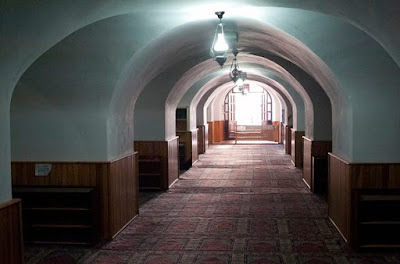
UNDERGROUND
MOSQUE IN ISTANBUL
G'day folks,
A surprising and unconventional mosque is hidden in the subsoil of Istanbul.Hidden among the alleyways of the Karaköy harbor there is an amazing Ottoman mosque that, in stark contrast to the great height of most Islamic temples in Istanbul, is situated sunken into the earth. For this reason it was dubbed the “Underground Mosque,” or “Yeralti Camii” in Turkish.
The easy-to-miss mosque is accessed from two entrances at street level, which lead to a short tunnel down into the earth. The ceiling is very low and the space is dark, illuminated with just a few lamps and some strident green fluorescents that illuminate the ancient tombs of two Arab martyrs.


The unusual mosque has a storied history. It’s believed that back when the Galata neighborhood was a Genoese settlement, the site was a Byzantine fort. The basement of the fort supposedly held the enormous chain that protected the Byzantine fleet from Turkish attacks by blocking ships from entering the Golden Horn waterway into the city.
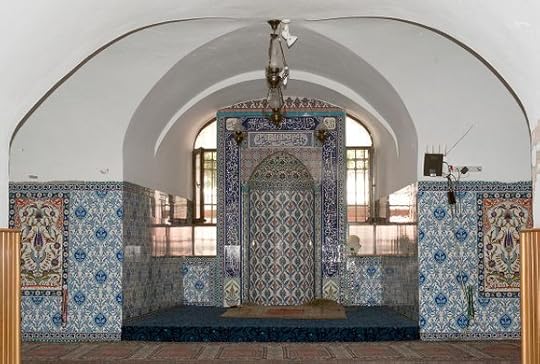
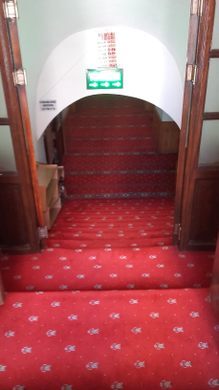
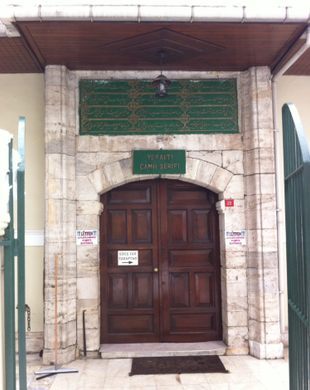
After the Ottoman conquest, the subterranean site was used for ammunition storage until, in 1640, a religious leader of the Nakşibendi sect discovered the bodies of two Arab martyrs inside. It’s believed the soldiers participated in the failed Arab siege of Constantinople in the 7th century. It is said the Arab army interred their dead here after the attempted siege, along with valuable items locked in a vault sealed with lead. You can see the graves of the martyrs situated near of the back entrance of the mosque today, and off to the side is a gated room bearing two side-by-side tombs bathed in green light where the bodies supposedly rest.
The subterranean space was eventually converted into a mosque under the auspices of Grand Vizier Bahir Mustafa Paşa in 1757. The building, which for a long time even lacked a minaret, has two entrances at street level that allow access to the site below. When visiting this unusual mosque you seem to move between the shadows as a result of the near absence of natural light. In summer it is not strange to find people napping inside.
August 9, 2022
3 November 2022 - AMAZING PREDJAMA CASTLE - SLOVENIA
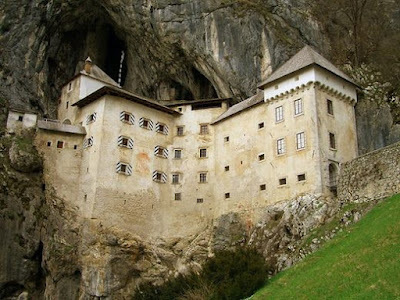
AMAZING
PREDJAMA CASTLE
- SLOVENIA -
G'day folks,
This castle has a secret tunnel which withstood a siege until its owner was killed by the Holy Roman Empire, whilst sitting on the toilet.Built directly into a rocky cliff face, Predjama Castle, or Predjamski grad in Slovenian, was considered virtually impenetrable when it was constructed in the 13th century. However, a few centuries later the structure’s fortifications were put to the test when a robber baron started a war with the Habsburgs and was forced to hole up in the castle for over a year.
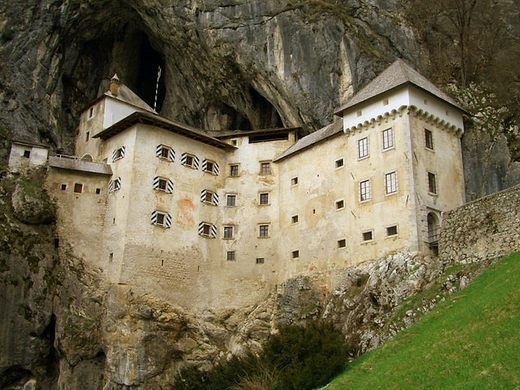
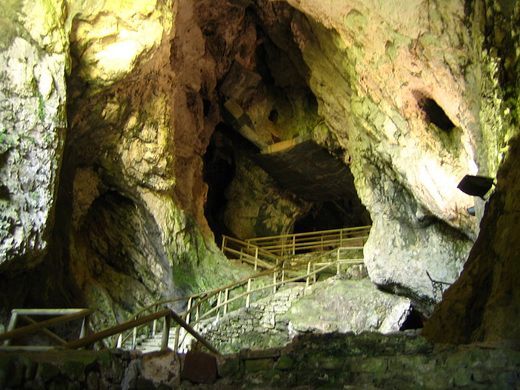
According to legend, Erazem Lueger and his family had taken over the Gothic Predjama castle in the late 15th century. Acquiring land and power, Erazem had become a well-known robber baron in the region. However, he quickly grew too big for his britches, murdering the kinsman of Frederick III, the Holy Roman Emperor. With the strength of all of his forces, Frederick came after Lueger, and forced him into hiding in his castle.
Despite the Emperor’s superior forces, the rebellious Lueger had both brains and a secret tunnel between the castle and the nearby Postojna Cave. For an entire year and one day, Lueger snuck out of the castle and replenished food and drink through the tunnel from a nearby town. Finally, after surviving for so many days, one of his servants sold him out.
Waiting for Lueger to use the outhouse on a high floor of the outside face of the castle, the servant raised a flag and one single shot from a cannon blasted the baron off the toilet.

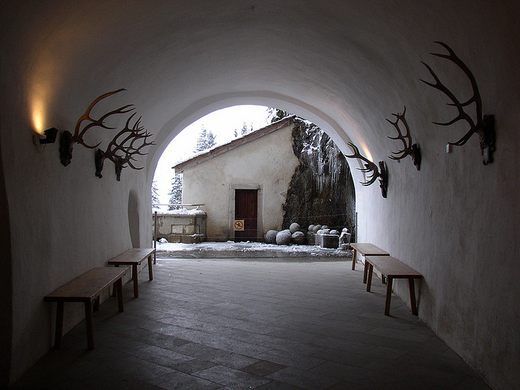
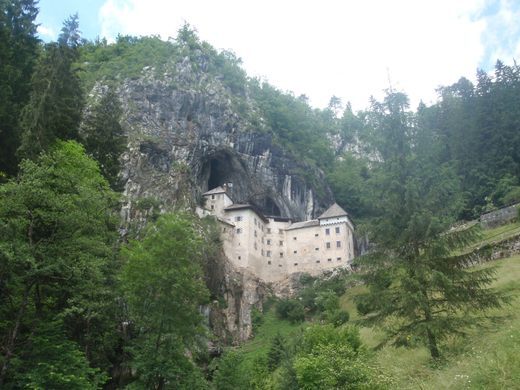
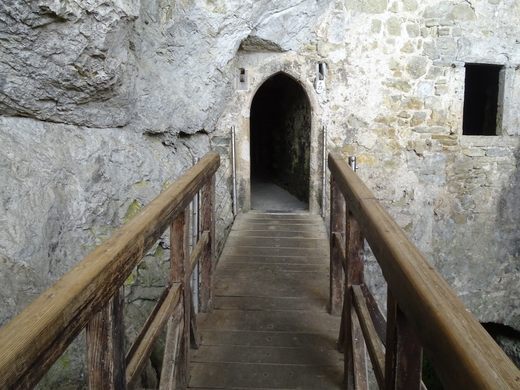
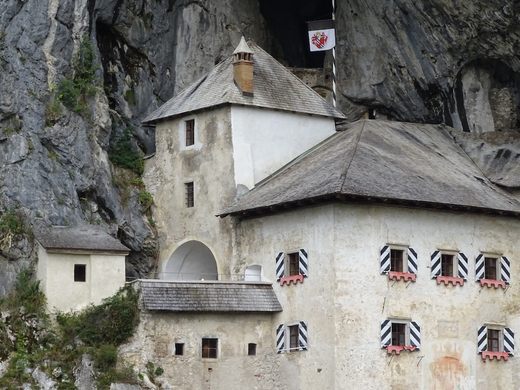
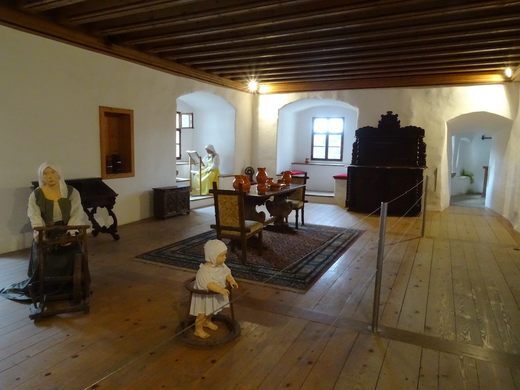
The castle has been completely reconstructed many times over the years. With a Renaissance-style remaining, the Gothic facade and the legend of Erazem Lueger are often forgotten. However, the Postojna Cave is still in use, allowing visitors to relive the siege and covert activities of a knight who crossed the wrong royal family of Europe. Another peculiar fact is that the cave under the Castle is the home to a colony of bats.
August 8, 2022
2 November 2022 - TOWER OF WIND IN TOKYO
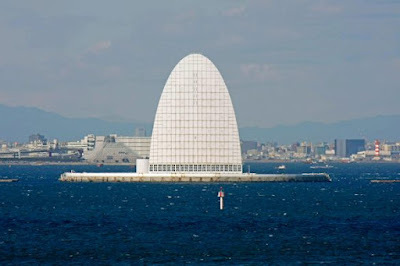
TOWER OF WIND
IN TOKYO
G'day folks,
Curious onlookers have suspected this strange structure is a secret government base.When a strange structure with sail-like towers appeared in the middle of Tokyo Bay, the internet began to ponder its purpose. Some suspected—jokingly, one would hope—nefarious ends. Was it a secret government installation, or a supervillain’s underwater lair? Or maybe an early warning system for an encounter with Godzilla?
The truth was far more prosaic. It was, in fact, the Kaze no Tō, or Tower of Wind, a ventilation shaft supplying air to the tunnel section of the Tokyo Bay Aqua-Line.
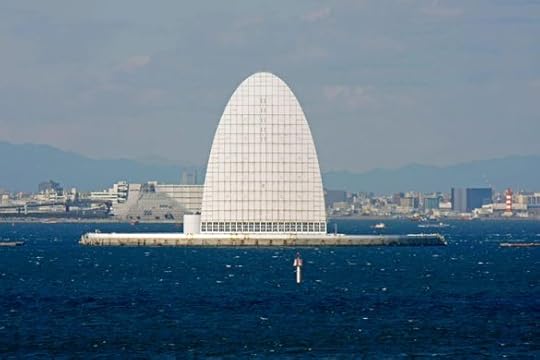

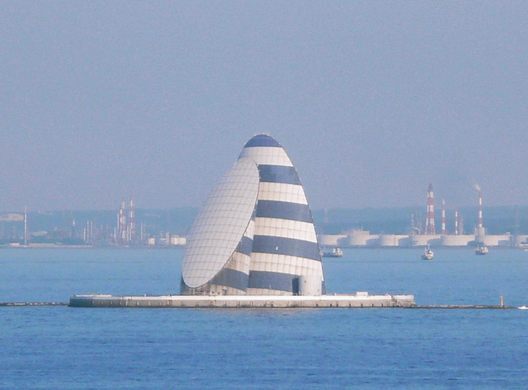
Opened in 1997, the Tokyo Bay Aqua-Line is a bridge-tunnel combination that crosses Tokyo Bay. It consists of two bridges at either end, connected by a six-mile-long tunnel underneath the bay. The tunnel currently ranks as the fourth-longest underwater tunnel in the world, and the longest undersea tunnel for cars (the three longer tunnels all carry trains).
The Tower of Wind sits above the midpoint of the tunnel, which lies about 131 feet below the surface. Designed by the acclaimed Pritzker Prize-winning Japanese architect Toyo Ito, the two elegant towers look like domes from some angles and wind-filled sails from others. Each tower captures the almost constant winds that blow across the bay, supplying the tunnel below with fresh air.
Users of the Tokyo Bay Aqua-Line can stop at a second artificial island, known as the Umihotaru, located at the bridge-tunnel crossover point, which has a rest area with restaurants, shops and amusement facilities. The Tower of Wind, however, is off limits. But you can still see it from across the bay, or from the window of your plane as you fly into Tokyo’s Haneda Airport.
1 November 2022 - UNDERGROUND GERMAN MILITARY HOSPITAL - GUERNSEY

UNDERGROUND GERMAN
MILITARY HOSPITAL
- GUERNSEY -
G'day folks,
This underground hospital complex was constructed by slave laborers during the German occupation of the Channel Islands.
Between the years of 1940 and 1945 hundreds of slave laborers working under the direction of German occupying forces dug 7,000 square meters in underground tunnels beneath Les Naftiaux in the British territory island of Guernsey.
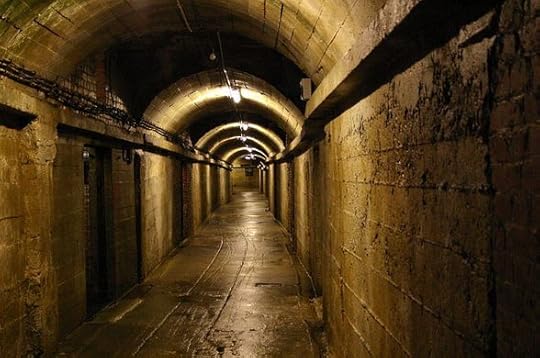
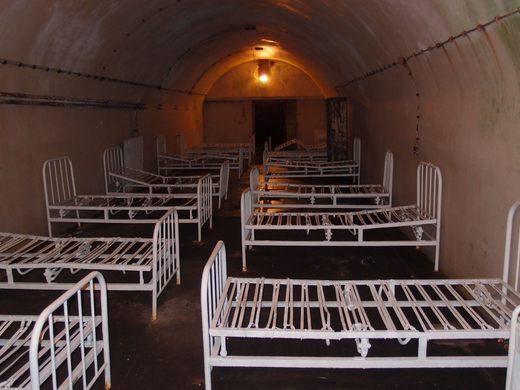
The laborers, men and women of numerous nationalities, many of whom died in the tunnels’ construction, used explosives, drills, hand tools, and their bare hands to carve these tunnels from solid rock. The subterranean complex was intended for use as a German military hospital and ammunitions storehouse.
By the time construction ceased at the onset of the D-Day invasion the hospital complex was large enough to house 500 patients and included facilities such as an operating room, X-ray room, dispensary, laboratory, and staff quarters, as well as a cinema, central heating plant, and kitchen. In addition to the three main entrances, the ventilation shafts were equipped with stairs and ladders so they could double as emergency exits.
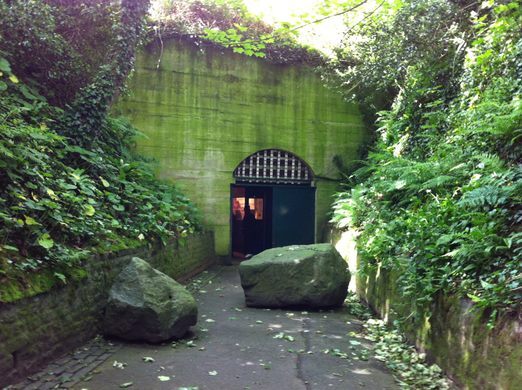
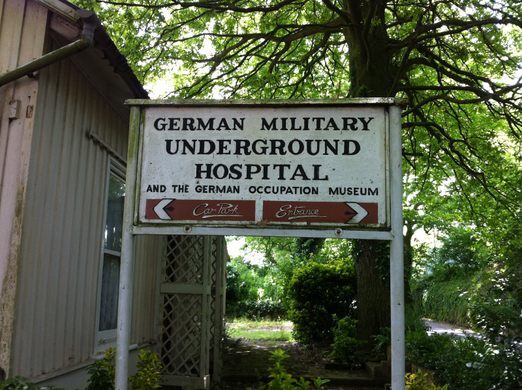
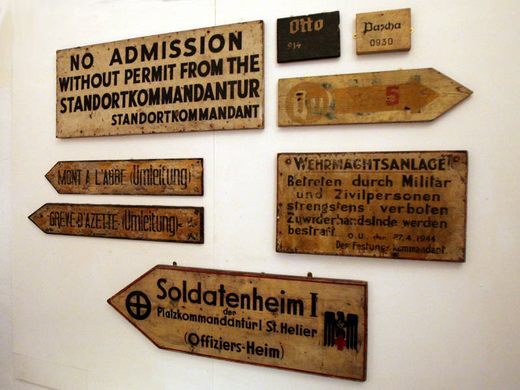
For all its planning, after three years of construction the hospital was only in use for around three months during the summer of 1944 when German casualties of the D-Day invasion filled all available wards. Hospital operations were eventually moved above ground when it became clear that the tunnels’ damp, dark atmosphere was not conducive to recovery. The ammunitions storage facilities fared slightly better, serving their intended purpose for around nine months.
Although much of the remaining equipment was removed by Allied forces in 1945, some remnants of the hospital’s wartime use remain, including hospital beds, kitchen and heating equipment, and signs in German posted throughout. The tunnels are privately owned by Joyce Browning who opened them to the public in 1954.
9 August 2022 - GRIC TUNNEL - CROATIA
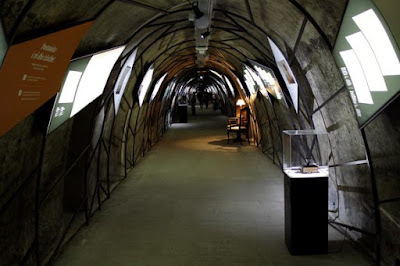
GRIC TUNNEL
- CROATIA -
G'day folks,
A World War II evacuation tunnel turned into a history display of Croatian state and people. This pedestrian tunnel in the city of Zagreb runs underneath the historic neighborhood of Grič. Built during World War II, the tunnel was originally intended to serve as a bomb shelter and transport link through the hill of Gornji Grad. It measures 350 meters long and up to 5.5 meters wide, connecting Mesnička and Stjepan Radić Streets. Construction began in 1943 and finished 1944. The tunnel was harshly criticized for its expense, and many argued that it was not necessary. Work continued nevertheless, though changes were made to the project. The original plans included a large underground hall to be placed in the center. But in the end, that feature went unrealized, and only an east-west transport corridor was finished.
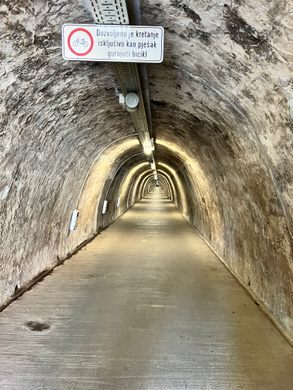
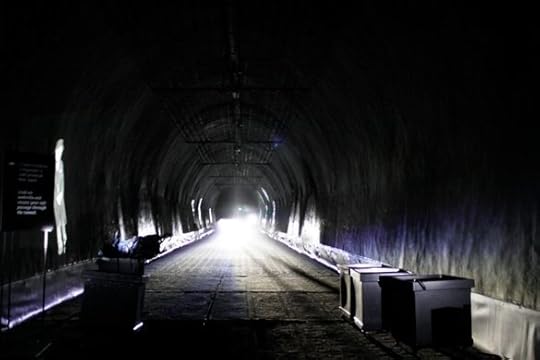


After the end of World War II, the tunnel was remodeled and the planned central hall was added. It was used as a warehouse for a food company but was soon forgotten and largely abandoned. It attracted unhoused people and others seeking temporary shelter.
Interest in reviving the tunnel started in the 1990s, when energetic rave parties were held inside. Proposals for the remodeled tunnel included a “museum of senses” and a lift that would allow people to reach the neighborhood above without climbing the steep hill.
But instead in 2016, the remodeled tunnel opened to public as a cultural center. You can literally walk through the history of Croatia and Zagreb and familiarize yourself with different historical events by information displays and objects. The tunnel is structured to different compartments that are arranged to various displays about culture, everyday life and science. Curators have used different image and light effects and interesting sound options.
The central underground hall has been turned into a Rain Room where visitors walk under water drops (umbrellas are provided by the Tunnel) and images of famous persons of Croatia are displayed. Another interesting exhibit is a Tesla machine that uses sound and electicity and fires out a lightning effect analogous to a Tesla coil.

August 7, 2022
29 October 2022 - NAZI CONCENTRATION CAMP MEMORIAL - FRANCE
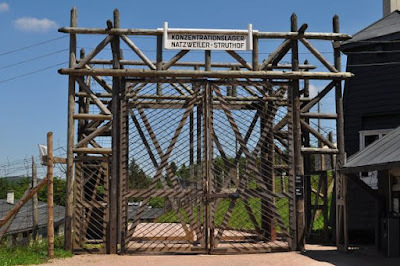
NAZI CONCENTRATION
CAMP MEMORIAL
- FRANCE -
G'day folks,
Today, this former Nazi concentration camp stands as a poignant memorial to the victims of fascism, and a warning from history.Surrounded by the picturesque forests of Alsace sprawls a sinister leftover of the Nazi occupation of France, the Natzweiler-Struthof concentration camp. Prior to the arrival of Nazi occupying forces, this area was commonly used by local Alsatian people as a popular spot for picnics during summer and in winter such activities as skiing and sledging, however, the German invasion of France put an end to all that.
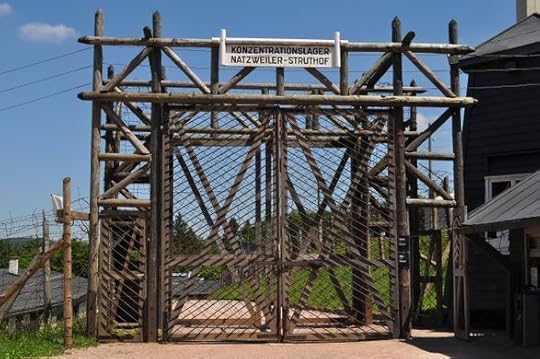

The geology of the area had been identified as being of great strategic interest to the Nazis even before their invasion of France, due to the pink granite that could be mined there. (This type of granite was a favored building material of the edifices and monuments of the Nazi period).
The remoteness of this site had also been recognized as an “ideal location” for a concentration camp. In 1941, after the invasion and occupation of France, Natzweiler-Struthof was constructed on the personal orders of Heinrich Himmler, the head of the SS.
Natzweiler-Struthof was a camp used primarily for the internment of political opponents of the Nazi regime in the German-occupied territories of Western Europe such as captured French, Dutch, Belgian and Scandinavian resistance fighters. It was also to be the final destination of British spies and agents of the S.O.E. who had been captured and interrogated.
Such prisoners were classified by the Nazis as being “Nacht und Nebel” (“Night and Fog”), because upon arrest by the Gestapo or SS they would be sent directly to a concentration camp (thus “vanishing into night and fog”) without their families having ever being informed of their whereabouts. These measures were intended by the Nazis to prevent resistance figures from being made into “martyrs” and to discourage popular support for resistance, which they greatly feared.
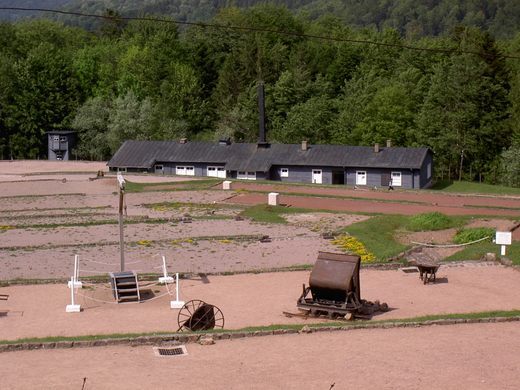
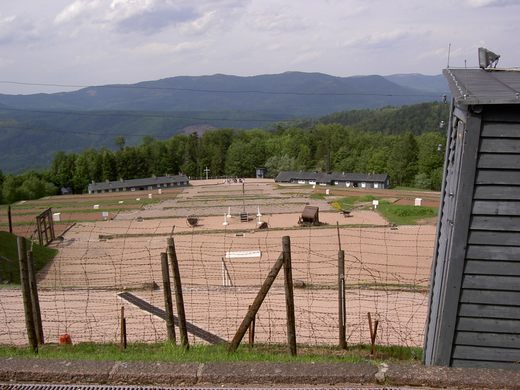
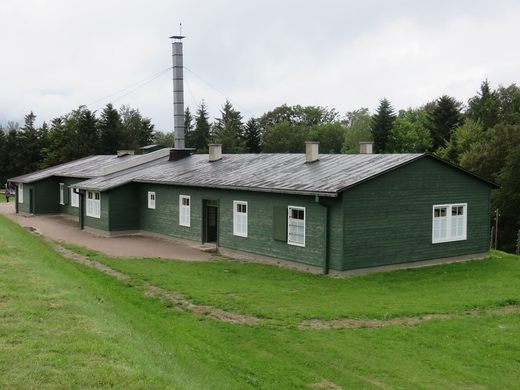

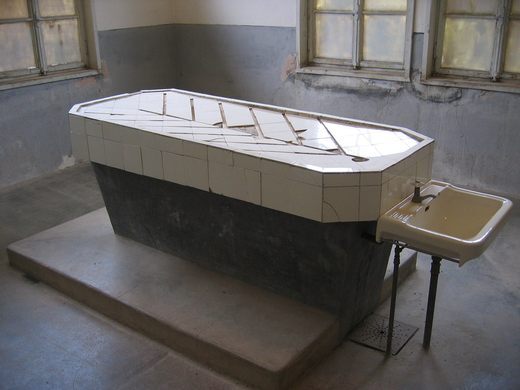
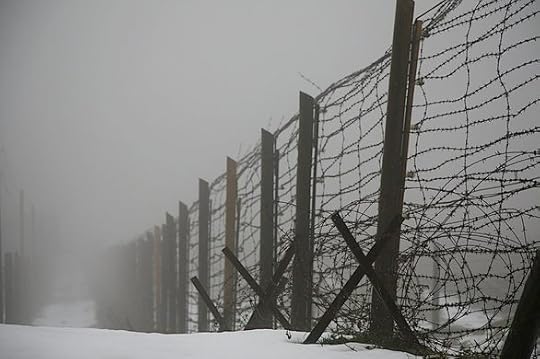
Prisoners sent to Natzweiler-Struthof camp would either be immediately executed or worked to death slowly through starvation over an extended period in which they were forced to produce war munitions or to labor in the mining of granite, which would then be sent by rail back to Germany.
As the Nazis began to face defeat and the Allied forces pushed eastward into the Alsace region, the camps were largely abandoned. Prisoners were evacuated and sent on a death march into Germany to the larger camps of Auchswitz and Dachau.
From 1941 to 1944. approximately 52,000 prisoners ended up in Natzweiler-Struthof camp. Some 22,000 met their deaths here, including the famous French resistance leaders Andree Borrell and Charles Delestraint and S.O.E agents such as Vera Leigh, Diana Rowden, and Sonia Olschanezky.
A famous survivor of the camp was the Slovenian writer Boris Pahor who wrote poignantly of his experiences as a prisoner at Natzweiler-Struthof in his moving autobiographical novel Necropolis, published in 1967.

August 2, 2022
28 October 2022 - KALAVRYTA SACRIFICE MEMORIAL - GREECE

KALAVRYTA
SACRIFICE MEMORIAL
- GREECE -
G'day folks,
Here is a solemn reminder of the infamous World War II war crime that massacred almost all the men in a small Greek town.In October 1943, Greek People’s Liberation Army guerrillas captured 77 German soldiers on a patrol mission, following an ambush in the mountains outside Kalavryta, southern Greece. After negotiations for a prisoner exchange failed, the captives were executed in a local ravine, with only two making a lucky escape undetected.
In response, commanding General Karl Von Le Suire ordered Unternehmen Kalavryta, a guerrilla cleanup operation that included terrible reprisals aimed at the local civilian population. Troops from the 117th Jaeger Division, a unit with previous counter insurgency experience in what was then occupied Yugoslavia, converged to the town of Kalavryta from all directions, burning and looting 50 villages along the way and executing 143 male civilians.


Upon reaching Kalavryta on December 13, 1943, the soldiers began setting the town ablaze. They then gathered the town’s entire population at the schoolyard and separated them in two groups. All able men age 13 and upward were led to a hill outside the town, while women, the elderly, and small children were locked inside the schoolhouse.
At noon, the schoolhouse was set on fire with over 200 people inside, while at the hill, the soldiers began executing the 461 men by machine gun fire. The action was coordinated by flares, so the men would die in full view of the burning town, and within earshot of the screaming women, children, and elders, now surrounded by flames. While the execution was taking place on the hill, the panicked, choking prisoners managed to smash through the school’s doors and escape in a frantic stampede, while others threw their children outside the windows of the burning building to save them.
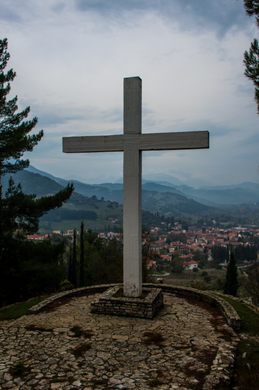

Only 13 men survived the execution, injured or hiding under the bodies of the dead, while soldiers roamed the hill, delivering the coup-de-grace. After the soldiers’ departure, the escaped women, children, and elderly reached the blood-soaked hillside, where they discovered the grim fate of their male relations. Without any tools or farm animals left in their looted households, they began dragging the bodies to the cemetery nearby or digging shallow graves with their hands.
Today, a solemn memorial complex stands on the hill where the execution took place. It includes a large cross, ossuary, the harrowing sculpture of a lamenting woman of Kalavryta, as well as some on-the-spot graves that remained on site since that day. The Kalavryta schoolhouse has been converted to a museum displaying everyday and personal items that survived the town’s destruction, as well as photos and eyewitness accounts that testify to the atrocious conduct of the 117th Jaeger Division.
27 October 2022 - STATUE TO HONOUR SECRET AGENTS - ENGLAND
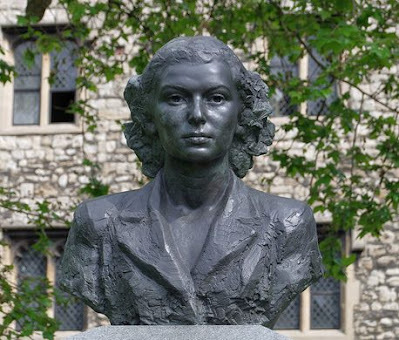
STATUE TO HONOUR
SECRET AGENTS
- ENGLAND -
G'day folks,
Here, a bronze bust commemorates the heroism of the secret agents who led covert operations against the Nazis.Only a short distance from the headquarters of the MI6, the British secret intelligence service, stands a small plinth topped by the bronze bust of a defiant-looking young woman. In a city full of monuments this rather unassuming memorial is often passed by, barely inviting a disinterested glance from pedestrians. But it shouldn’t be.
Behind this monument is a moving story that commemorates the heroism of the men and women who served as secret agents and risked their lives to defeat the Nazis during World War II. One such woman was Violette Szabo, who sacrificed her life in the field in order to fight fascism.
Born in 1921 in Paris, Szabo grew up in London during the Great Depression. At the outbreak of the Second World War, she joined the Women’s Land Army and the Auxillary Territorial Service where she met and married a Free French corps soldier and gave birth to a daughter. Szabo’s husband was later drafted to North Africa where he was killed in action during the battle of El Alamein, an event that led Szabo to join the Special Operation Executive (S.O.E.) intelligence agency.
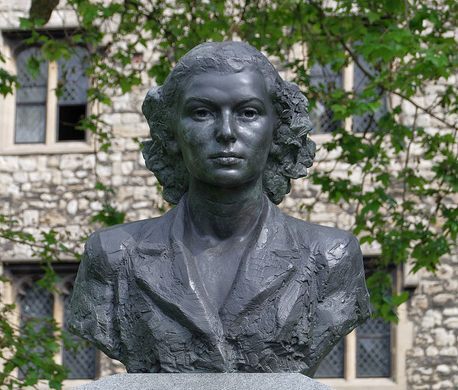

Due to her fluency in French, Szabo was considered to be a valuable asset for the wartime intelligence operations and underwent extensive training as a field agent, learning everything from how to conduct espionage and reconnaissance missions, to how to use effective sabotage skills, weapons, and explosives in guerilla warfare. She embarked on her first mission to Nazi-occupied France in 1944 to gather intelligence on local factories that were being used to produce war materials. It was hoped that any information gathered from behind enemy lines would greatly improve allied strategic bombing raids and buy valuable time for Britain. The operation, however, did not go to plan. The Gestapo captured and interrogated a British spy who under torture revealed sensitive information.
With the mission compromised, Szabo and her team were forced to hurriedly return to England in an RAF spy plane before the SS could hunt them down. During the escape, the plane was almost shot down by several Nazi anti-aircraft guns but luckily managed to reach the safety of England.
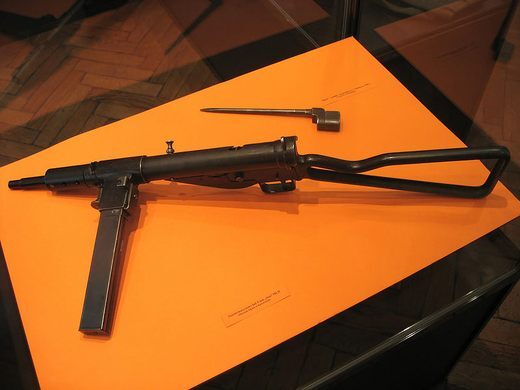

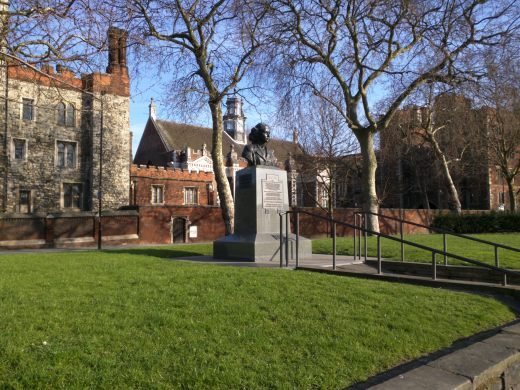
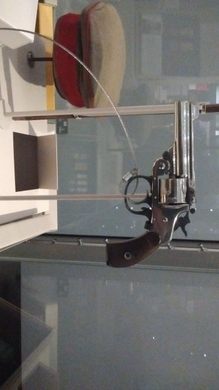
Only two months later, Szabo was back in the field for her second mission, which was to act as liaison with a group of local French-resistance partisans and to lead operations in sabotaging German communication lines. The mission was of top strategic importance to the Allied forces as its objective was to delay the Nazi military response to the Normandy D-Day landings, which were then imminent. Under cover of darkness, Szabo was parachuted behind enemy lines with two fellow spies and made contact with the resistance, but it became immediately apparent that the S.O.E. had vastly overestimated the capability of the partisans.
It was therefore decided that Szabo should be transferred to another resistance unit further south, and she set off right away. But due to poor intelligence gathered by the partisans, the group was unaware an SS unit was close by. What’s more, the resistance’s insistence on using cars for travel meant they naturally aroused the suspicions of the German forces. Upon meeting a roadblock the car was stopped, and realizing they were trapped, the spies fled from the car on foot into nearby fields with the soldiers in hot pursuit.
Szabo twisted her foot while running and, unable to keep up, encouraged the others to run for safety while she kept the Germans pinned down with covering fire from behind an apple tree. Showing enormous bravery she used her Sten submachine gun against the pursuers for over 30 minutes and succeeded in killing a Nazi corporal and wounding several German soldiers, thus allowing her comrades time to escape. Eventually, however, she ran out of ammunition, and before she could take her life with a cyanide pill was captured and dragged off to be interrogated by the SS.
A German officer was apparently so impressed with her bravery that he congratulated her and put one of his cigarettes in her mouth offering to light it. Szabo reputedly spat out the cigarette and then spat in his face demanding that her hands be untied so that she could smoke one of her own cigarettes. Her interrogation lasted four hours in which she was subjected to horrific torture and sexual violence before she was sent by train to Ravensbrück concentration camp.
In Ravensbrück, Szabo endured the inhuman conditions and harsh physical labor with an indomitable resilience, and even kept up the morale of the other imprisoned resistance fighters by beginning to organize an escape from the camp. Unfortunately, in February 1945 the Germans discovered her plans and she was taken to the execution block where she was shot and killed. Szabo was only 23 years old when she died, but in her short life she had shown tremendous bravery in her devotion to the cause of defeating fascism.
July 31, 2022
26 October 2022 - THE HEYDRICH TERROR MEMORIAL - PRAGUE
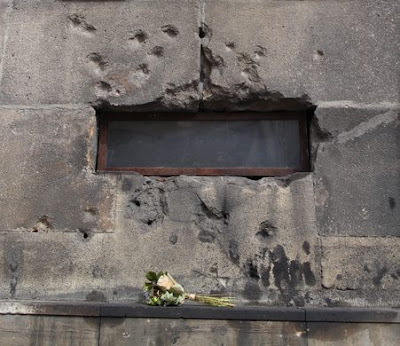
THE HEYDRICH
TERROR MEMORIAL
- PRAGUE -
G'day folks,
Bullet holes in a church wall are a reminder of the violence that followed the assassination of a high-ranking Nazi officer.On May 27, 1942, Deputy Reich Protector Reinhard Heydrich—known as ‘the Butcher of Prague” and the right-hand man of Nazi leader Heinrich Himmler—was attacked by British-trained Czech paratroopers in Operation Anthropoid, and died of his injuries a week later. This was one of the only assassinations of a high-ranking Nazi official to have succeeded, and the consequences were swift and cruel.
In the aftermath of the attack, 13,000 people were imprisoned and interrogated. Mistakenly believing the perpetrators were connected with the village of Lidice, the Nazis murdered over 5,000 people and also burned and leveled the entire town to the ground, even after realizing the connection had been a false lead. They even destroyed the village cemetery, dug up the dead, and changed the course of the river so that “nothing was to remain” of Lidice.
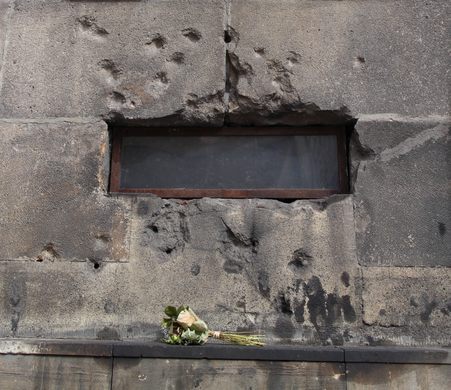

After the assassination, the Czech paratroopers hid in the church’s crypt for three weeks until their hiding place was betrayed. Some 750 German soldiers surrounded the church, attempting to gas them out and then flooding the crypt with fire hoses through a tiny gap in the wall. Three paratroopers were killed in the fight; the other four took their own lives rather than surrender. The priest and bishop who sheltered the soldiers were later murdered by the Nazis. In 1945, the Czech traitor who betrayed their hiding place was arrested for treason and executed.

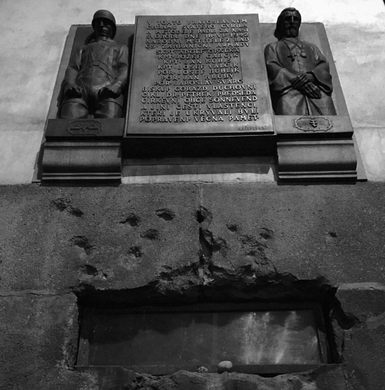
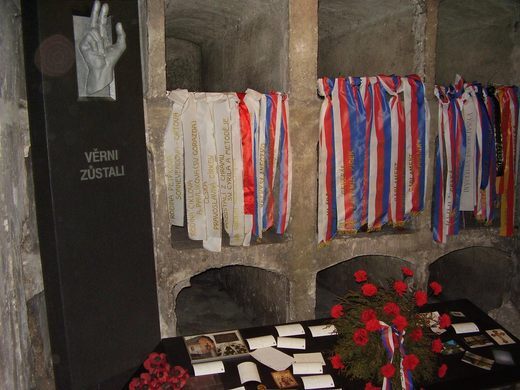
In the crypt itself, now a small museum dubbed the National Memorial to the Heroes of the Heydrich Terror, you can still see bullet holes and shrapnel scars on the walls. There are also signs of the paratroopers’ last desperate efforts to dig an escape tunnel to the sewer. Outside, the narrow gap in the wall of the crypt where the Germans inserted their fire hoses is still covered with bullet marks. The last words of the paratroopers were reportedly, “We will not surrender. Never. We are Czech.”
23 October 2022 - GILLETTE - THE SHAVING PIONEER
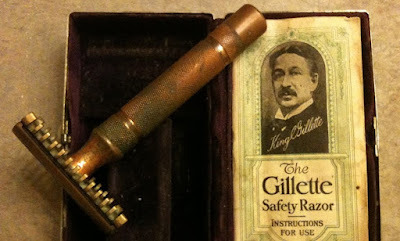
GILLETTE
- THE SHAVING PIONEER -
G'day folks,
Safety razor pioneer King Camp Gillette, who was born in 1855, may have made millions from his business but he was a Utopian Socialist at heart.
So much so that he dreamed of the day when all industry would be taken over by a single corporation owned by the public, and that everyone in the United States would live in a giant city called Metropolis powered by Niagara Falls.
Gillette envisaged setting up a company to make this vision come true and offered Theodore Roosevelt a million dollars if he would run the operation. The former President declined.
Ancestors of the strangely named King Camp Gillette were French Huguenots who moved to England, then in the 17th Century to the newly established Massachusetts Bay Colony. After King was born in 1855 the family moved from Wisconsin, where they had settled, to Chicago, where he was raised.
He became a travelling salesman of hardware and in 1895, while honing a “cut-throat” razor so that he could shave before starting work, he thought how much better it would be to avoid this dangerous and tedious daily task by using a replaceable razor.
Men had been grappling with the problem for centuries. Prehistoric cave drawings show that clam shells, sharpened flints and even shark’s teeth had been used for shaving. Gillette’s ideas were rather more sophisticated, even if they were not new.
The first safety razor was in fact invented in the 1880s by the Kampfe Brothers of New York, and as writer Brennan Kilbane of Allure magazine noted: “Gillette did not invent the razor, nor the safety razor, nor the concept of disposable blades, but he was the first to patent it. His economic legacy is best felt in the frustration that heats your face when you realise your $22 razor blade set requires you to continually repurchase a $36 eight-pack of refills.”

This all stems from advice given to the young entrepreneurial Gillette by an employer: “Invent something that will be used and thrown away so that the customer will keep coming back.”
Gillette's disposable blades created a new and lucrative retail concept in which razors were sold quite cheaply so that consumers would be locked into the need to continuously purchase relatively expensive blades. The selling technique would become known as the ‘razor and blades model’ and is perhaps most associated today with the printers and ink market.
In its first year of trading in 1903, the Gillette Safety Razor Company sold 51 razors and 168 blades. By the end of 1904, it had produced 90,000 razors and 12,400,000 blades. Gillette’s innovative sales strategy – selling the razors at a loss but making profit on the blades – would turn him into a multi-millionaire.
The fabulously wealthy King Camp Gillette died in 1932, aged 77. Today, the highly successful Gillette brand is owned by the US-based multi-national Procter & Gamble company which purchased the business in 2005 for a staggering $57 billion.



